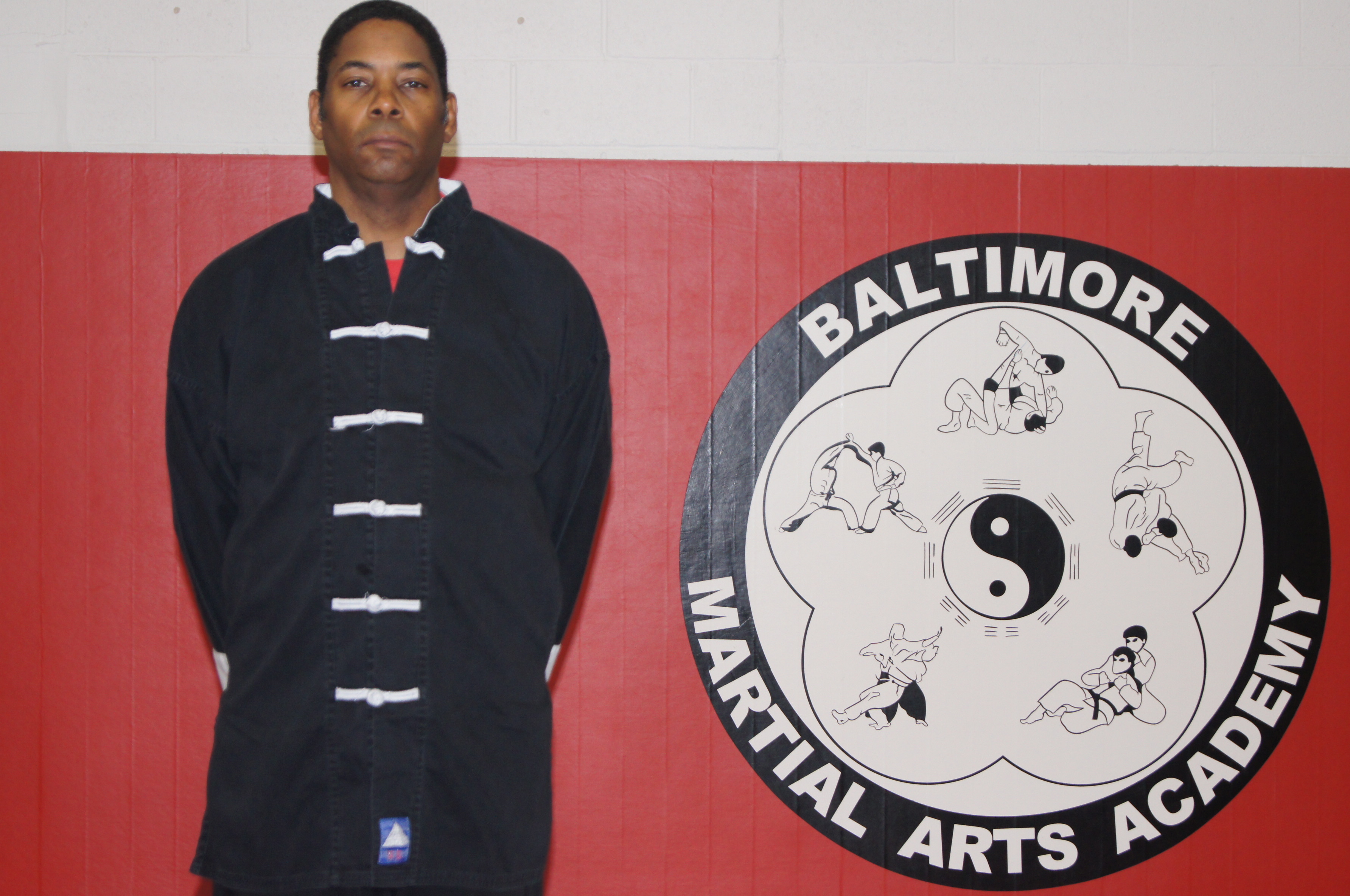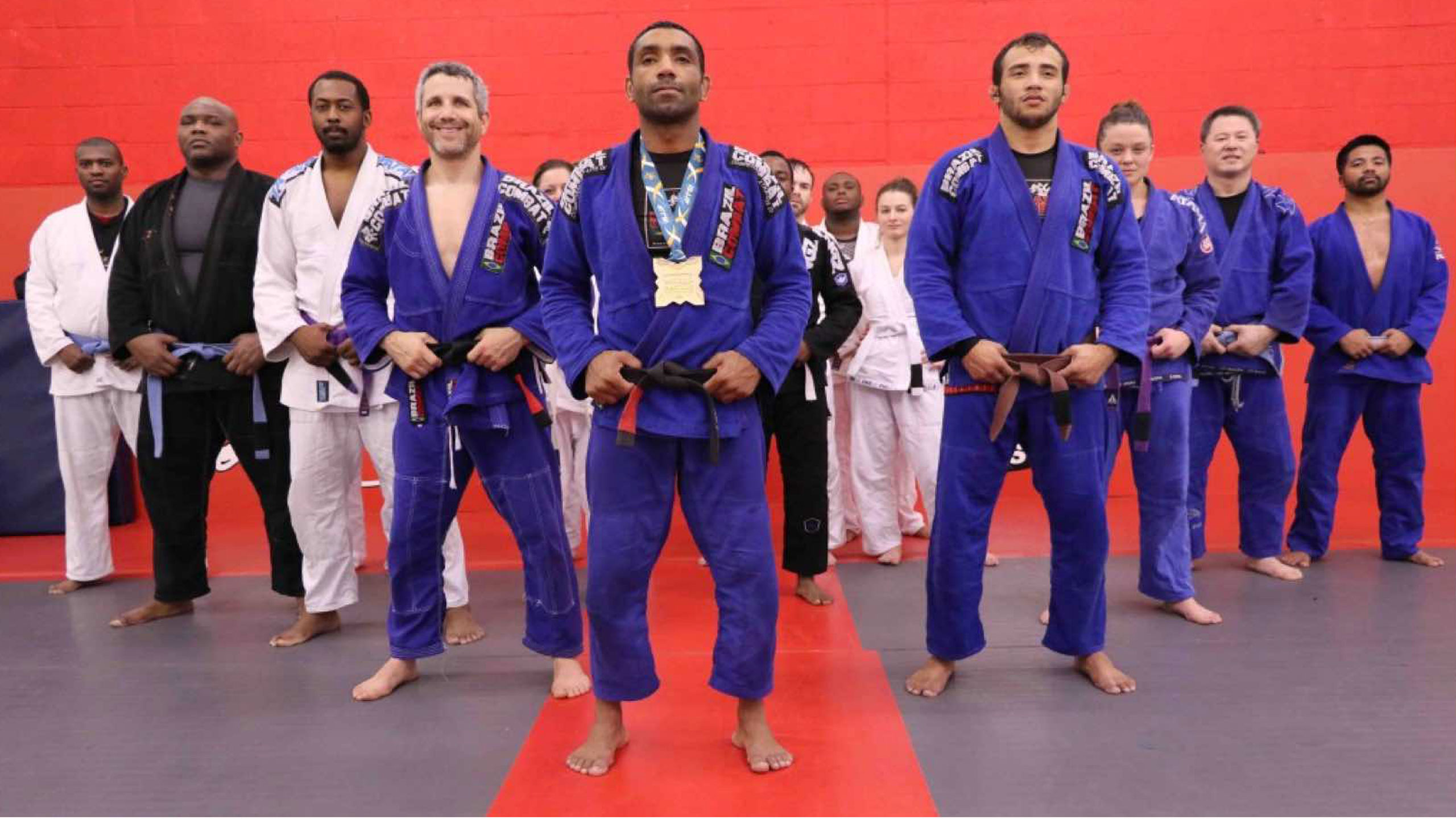Tien Shan Pai Kung Fu
Kung Fu is a martial art with a very long history, and many different facets to it.  While mostly known as an art of fighting, I believe it is much more than that - it is a system of surviving and thriving in difficult conditions, both individually and as a group.  While there is a competitive side of Kung Fu, we see the main purpose to be a life long journey to acquire skills to support physical, mental and emotional well being. We emphasize overall development of a person versus achieving the highest possible results in competition of scores. People regardless of their age, physical condition, gender, weight benefit from our training program. Besides stand-up fighting, our Kung Fu training includes self-defence skills, physical fitness, defence against weapons, aspects of self-healing, relaxation and meditation.
Our school has a well developed curriculum to follow and measure individual progress. We see the belt system in a similar way to numerical system for classes in college: your belt indicating the skills you have as well as the set of skills you currently are working on. Reaching the black belt level is not an end of the path, rather it may be compared to achieving a bachelor's degree in college when you have mastered the fundamental skills in a subject, and are ready go deeper in studying selected areas. Our chief instructor Mike Thomas and higher belt students in class are always happy to help you and answer questions. Below we tried to subdivide the Kung Fu program into distinct parts:
BASIC SELF-DEFENCE SKILLS
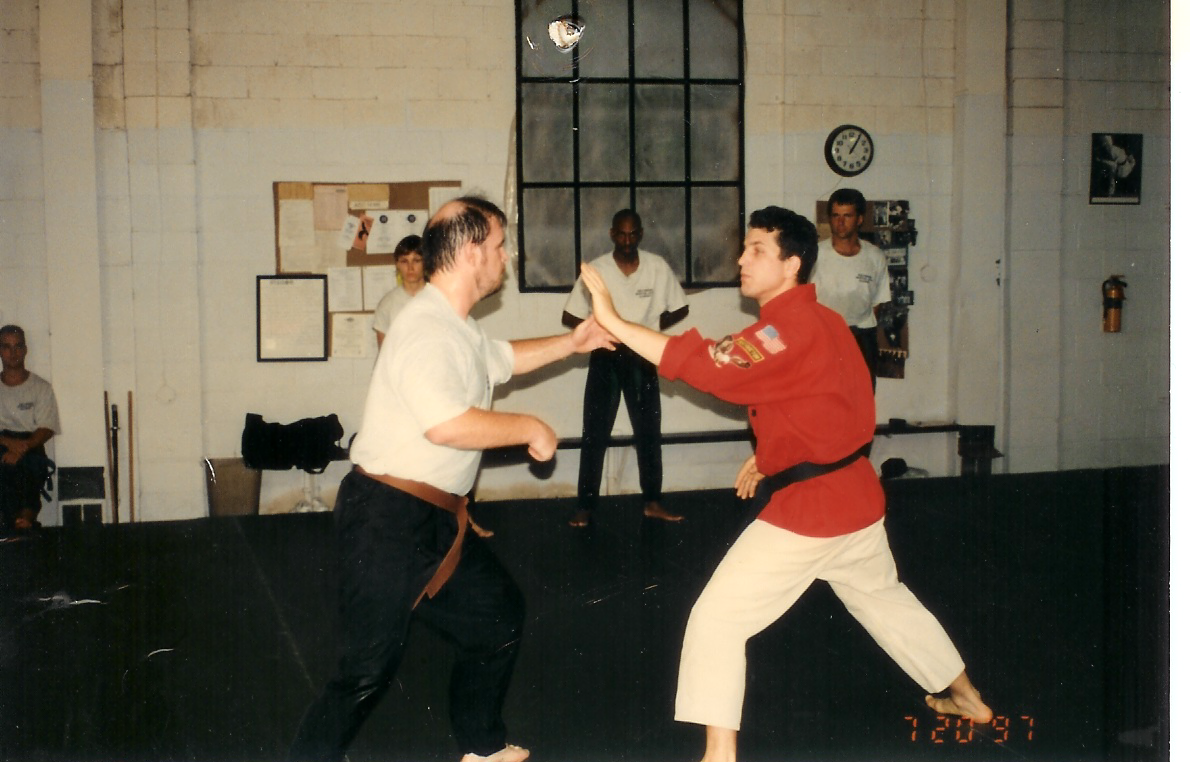
As a part of our Kung Fu program, we teach basic elements of fighting skills: punches, kicks, blocks, stances, footwork, clinching, escapes from grabs. We use both heavy bags for stationary training and target mitts for training in motion. The basic techniques are used as building blocks for a variety of offence-defence combinations which train reflective responses to different attacks.
KUNG FU FORMS
Forms are prescribed sequences of moves based on martial art techniques. They train the correct way of moving, coordination of footwork with strikes and other techniques, as well as judgement of distance between opponents. When practiced with low and long stances repeatedly, forms also provide very intense and versatile physical workout. While forms are based on real fighting techniques, they are often performed in stylised fashion, becoming also a way of artistic expression.
FITNESS and CARDIO
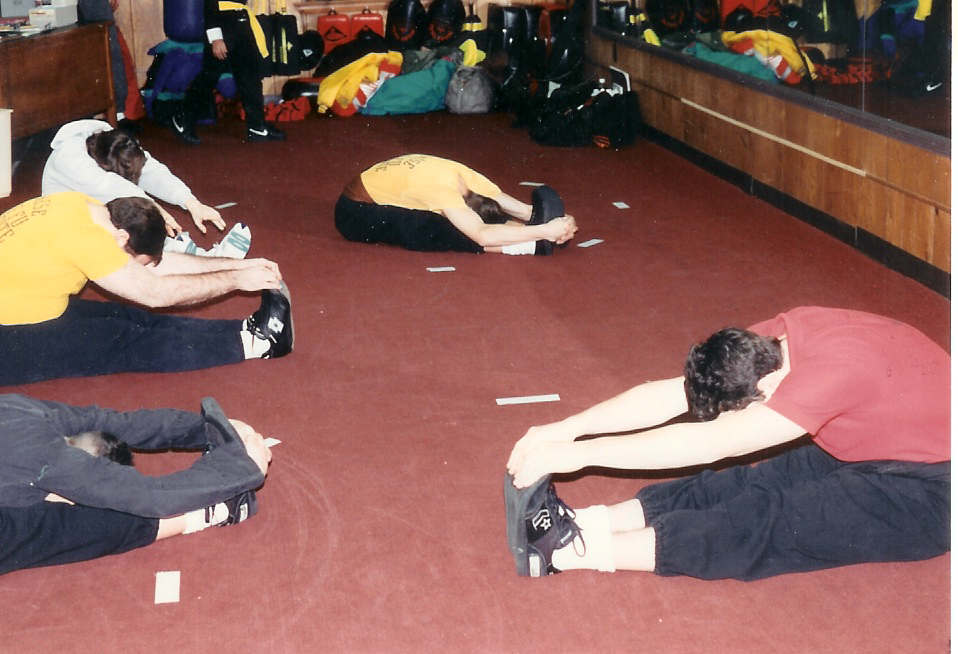
Just participating in class activities provides a good deal of physical activity.  In addition we conduct about 10 minutes of intensive cardio training every class using a variety of exercises, both based on Kung Fu tradition, and modern fitness approaches. It is also beneficial to stay after class for additional stretching and callisthenics as suitable to individual level and purposes.
CHIN-NA
Chin Na is a set of techniques applied to an opponent’s joints to defend against grabs and punches, restrict an opponent’s motion, and submit the opponent if necessary.  It is a very efficient self-defence technique which often allows you to prevent attack before it becomes a full fledged striking exchange.  Almost in every class we practice various aspects of chin na training, concentrating on technique and sensitivity to opponent’s intent and balance.
SPARRING
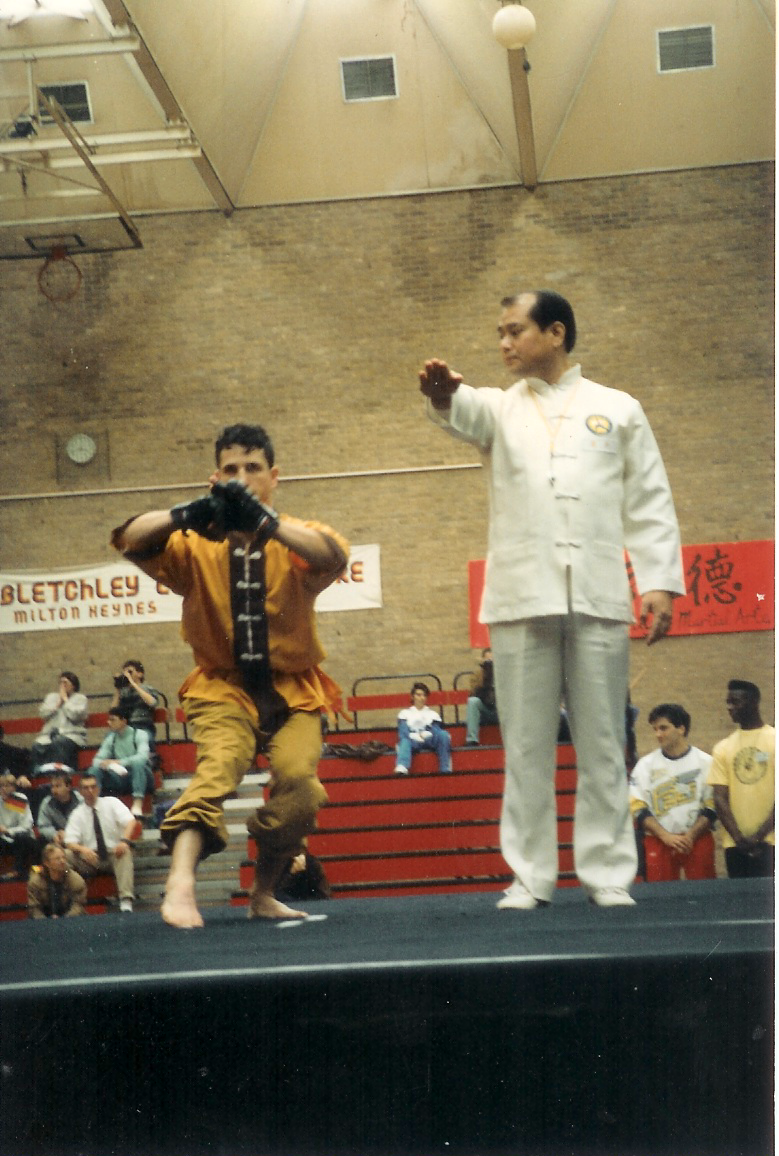
Practice fights train the practical applications of skills in a situation close to real fight yet in a controlled environment. Besides improving fighting skills it has a number of psychological benefits. Sparring allows you to learn maintaining calm and self-confidence in threatening situations, control aggression, overcome fears, make decisions under pressure, understanding personal and opponent’s limitations. In our school we usually start introducing students to sparring after reaching green belt level.
WEAPONS
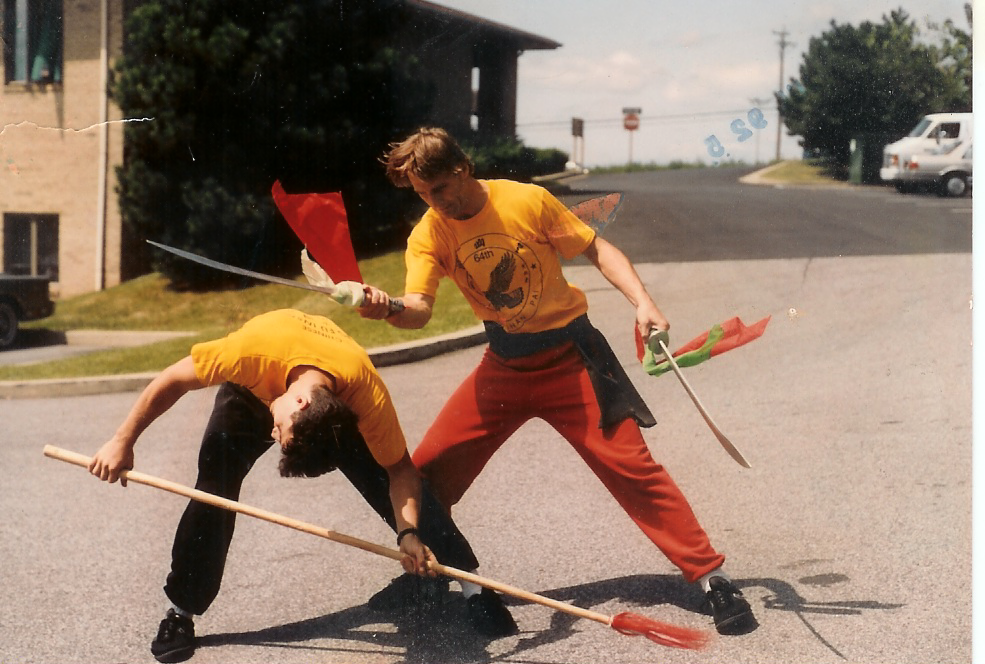
Tien Shan Pai includes a wide variety of weaponry. Most of the weapons taught are traditional implements used in ancient Chinese warfare. After a student attends the rank of Green Sash which can typically take about 6-12 months of training, he or she is introduced to the short staff. A short staff is a wooden dowel about 3 feet in length. After gaining proficiency in the short staff, the student is introduced to the broad sword. Other weapons that follow include the straight sword, long staff, spear, three sectional staff, fan and others.
TAI-CHI
Tai-Chi can be studied as a separate discipline and by itself can be considered a complete system of self-defense and personal development.  It is true that it takes longer to develop the same level of self defence skills comparing to external styles.   The variety and subtleness of techniques present an exciting challenge to someone interested to study human capabilities in depth.  Tai-Chi principles have a lot in common with principles of traditional Chinese medicine, and Tai-Chi practice has proved to be beneficial for relaxation, the immune system, balance, and everyday energy level. In our classes, we teach all students 108 Long Yang form, with those interested having a possibility to continue studying 300 Yang Chen-Fu form, Tai-Chi straight sword form and their applications.
CROSS-TRAINING
The core heritage of our system is the Tien-Shen-Pai Kung Fu style. However throughout many years we have brought in many efficient techniques from other disciplines, both from other Kung Fu styles (Hang Gar, Wing Chun) and other martial arts (Jiu-Jitsu, Aikido, Kali).  We strongly believe that a good martial artist has at least basic understanding of a number of different disciplines, while being excellent in a few. Different martial arts have different emphasis and techniques. Our class regularly trains together with the Aikido and Jiu-Jitsu classes in our school. Advanced students are also getting instruction in Kali and Arnis (Filipino knife and stick fighting).
Baltimore Martial Arts Academy
Walk in M-F, 5-9 PM Saturday, 9 AM – 2 PM & Sunday 2-4 PM Email us at:baltimoremartialarts@yahoo.com Baltimore Martial Arts Academy 6565 Baltimore National Pike, Catonsville, MD 21228 Looking for a map? Visit our You Tube Channel{Baltimore Martial Arts You Tube}. To read more reviews about Baltimore Martial Arts & Fitness please visit our GOOGLE PLACE PAGE.